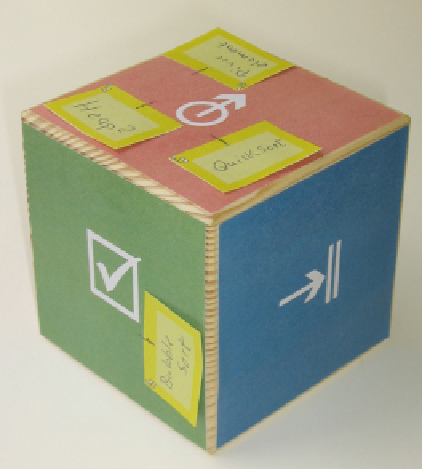Information Technology Reference
In-Depth Information
Main requirements for the interaction technique are first that it gives equal weight
to all participants and enables all of them to specify types. This stimulates negotia-
tion and joint group decisions. Second the technique should produce only minimal
extraneous cognitive load in order to not disrupt the ongoing meeting. Moreover the
currently selected phase should be clearly visible to all users with the goal to prevent
wandering from the subject or even reverting to an unstructured meeting.
These requirements are met by a shared tangible object which can have different
physical states and is located between the users on the table. A tangible is easy
and intuitive to manipulate and its physical state indicates the current phase. We
distinguish tangibles which stimulate by their affordances to follow a fix sequential
structure from tangibles which suggest phases but do not suggest a specific sequence
of them.
In order to illustrate the concept of tangible structuring of phases, we have devel-
oped two first prototypes of tangibles and an exemplary process model for learning
group meetings.
Process Cube
The first prototype is a tangible cube of about 10 cm edge length, which is entirely
covered with paper containing the Anoto pattern (Fig. 7.8). On each side of the
cube, the paper covering has a different color, representing a minimum of two up to
a maximum of six different phases in the collaborative process. Each time the group
proceeds to a subsequent phase, the cube can be rotated to have the corresponding
Fig. 7.8
The Process Cube
for collaborative tangible
tagging of group processes

